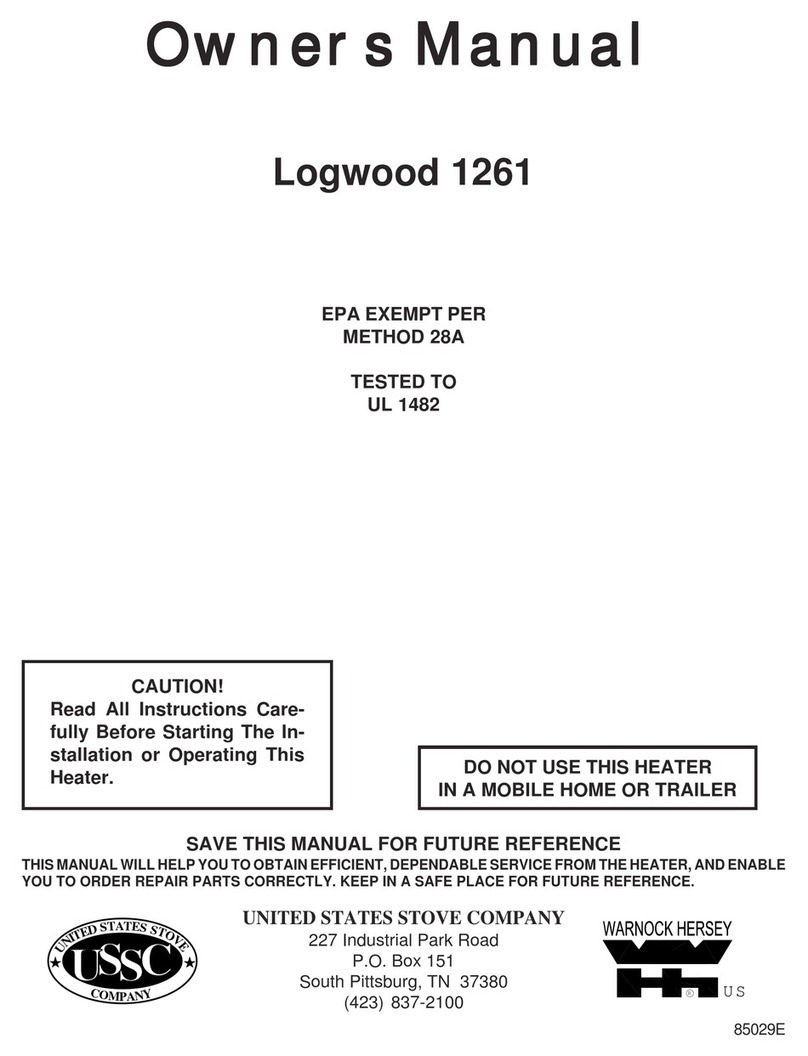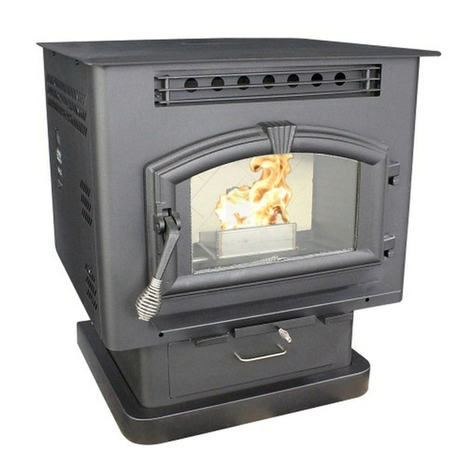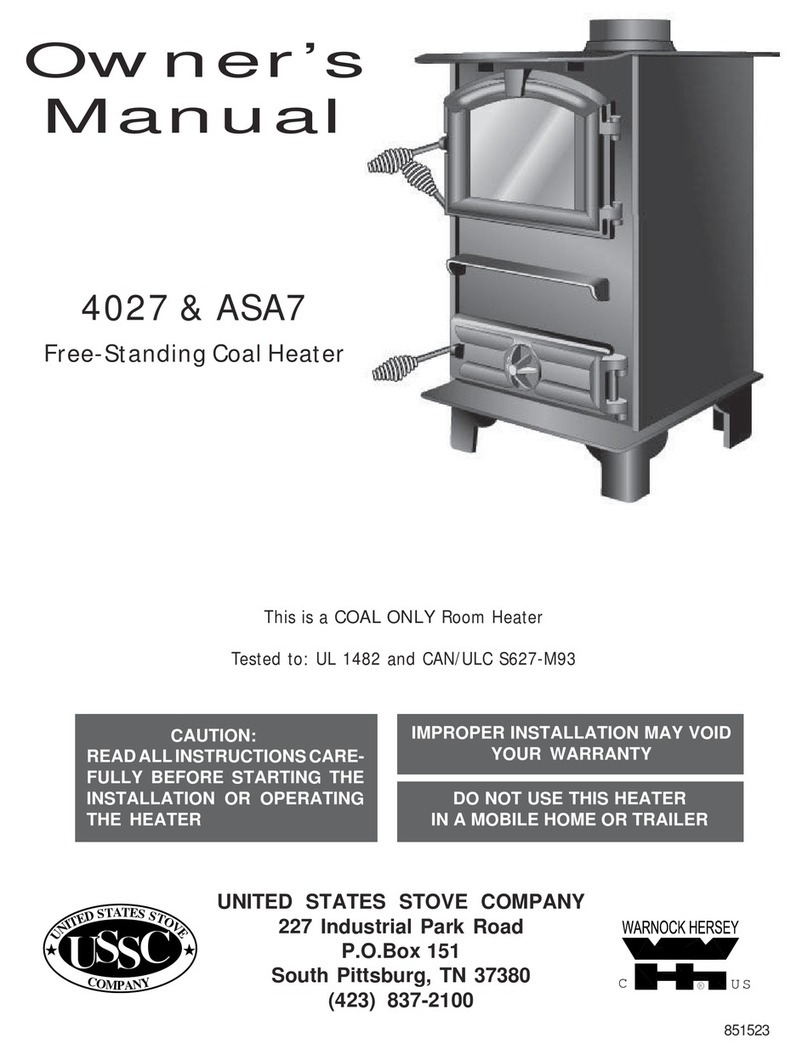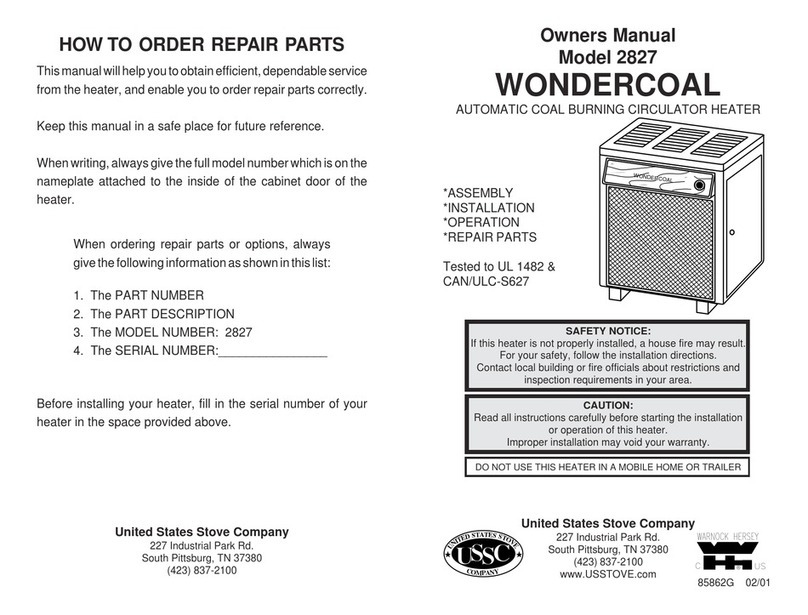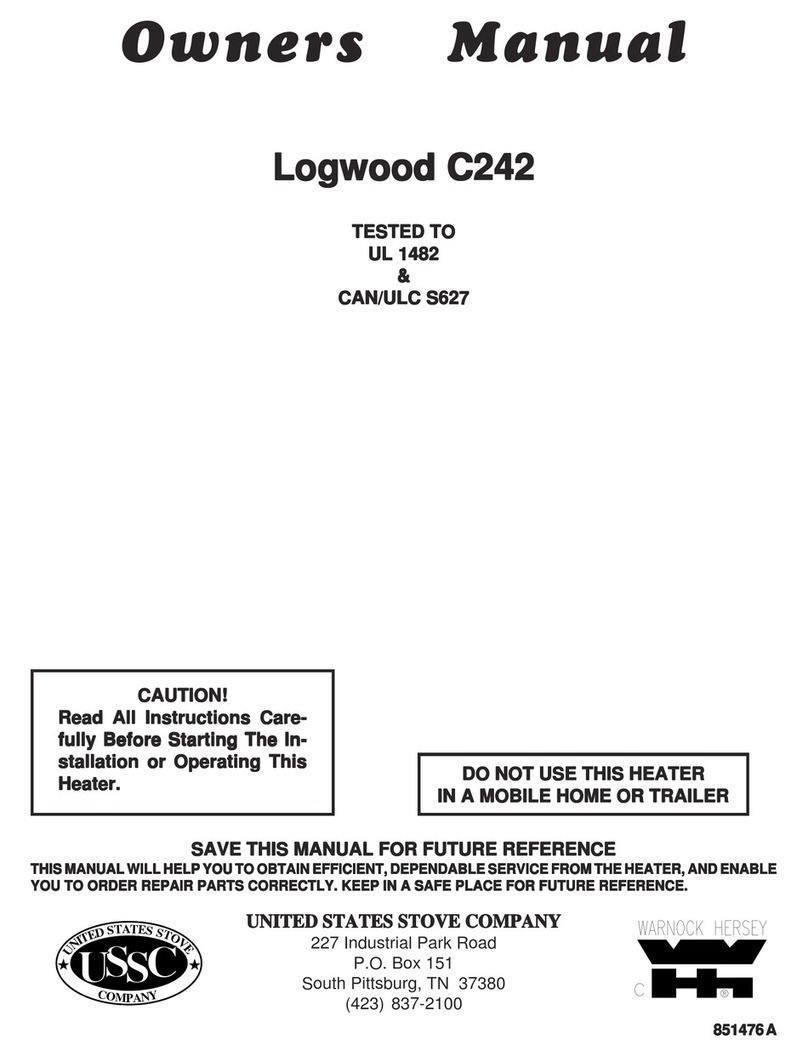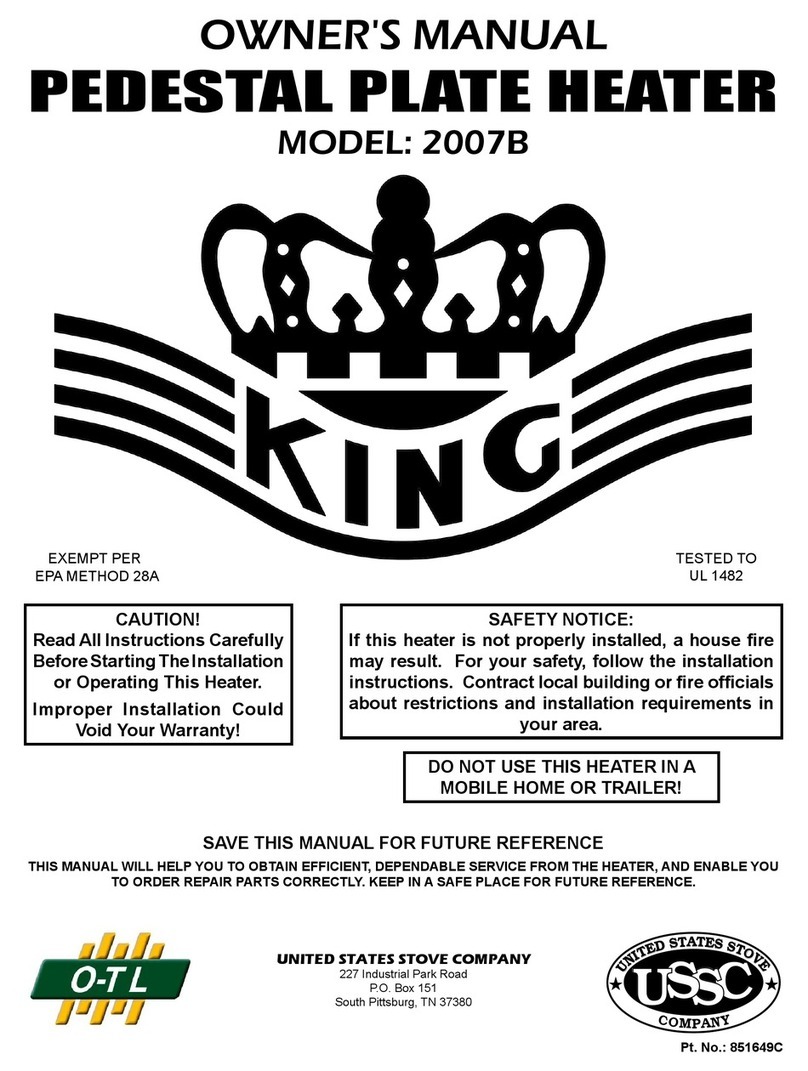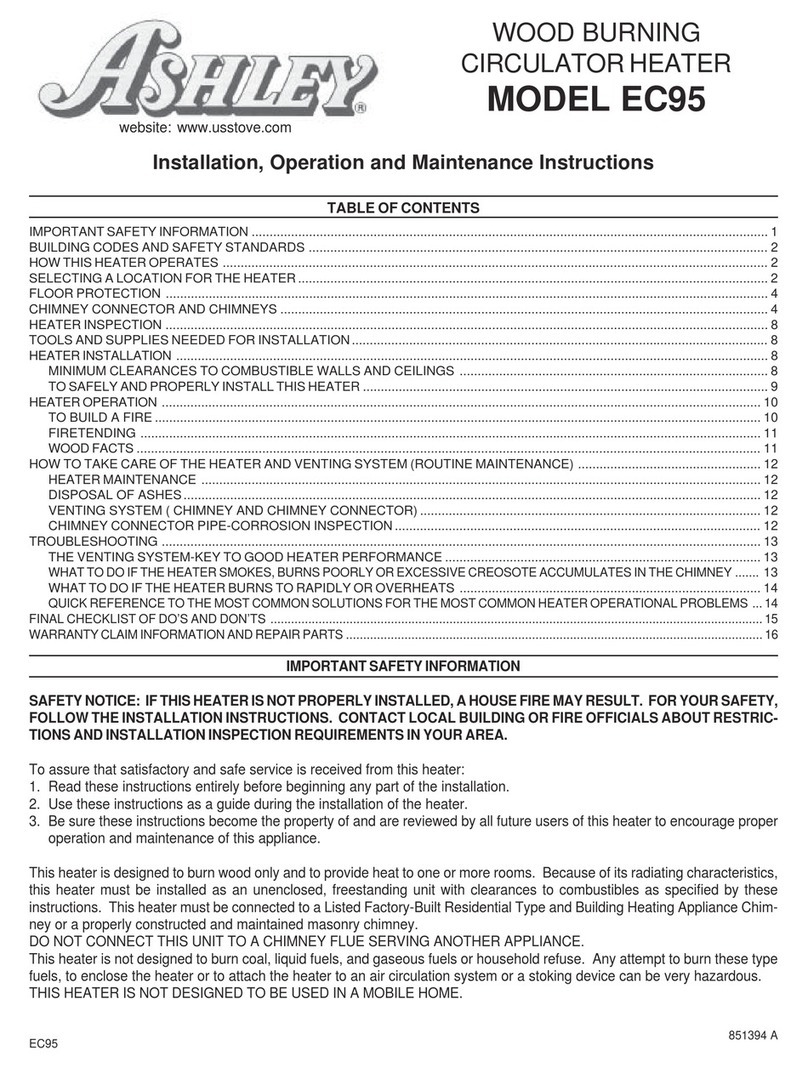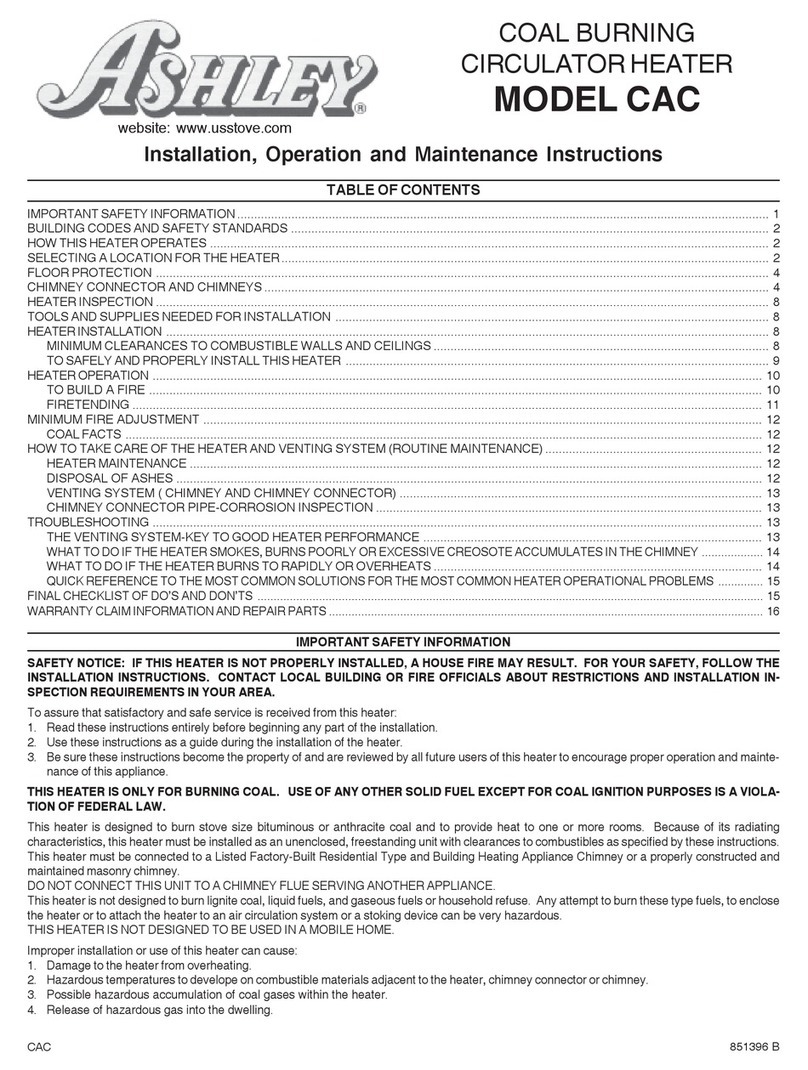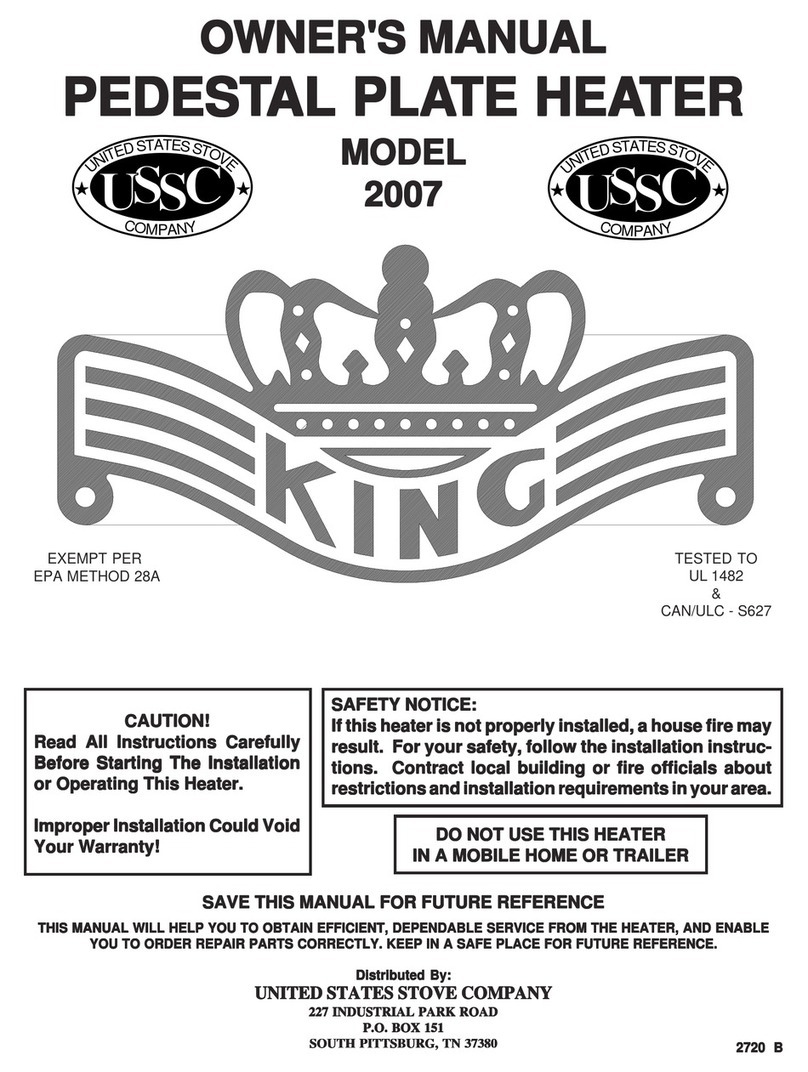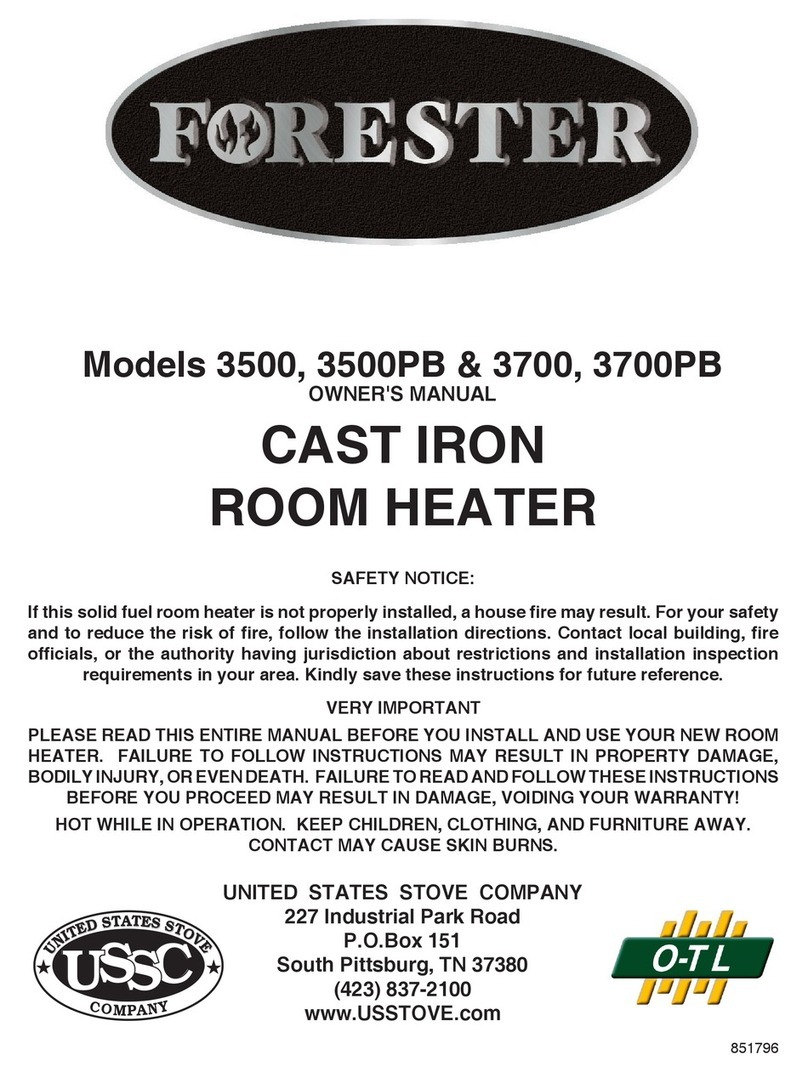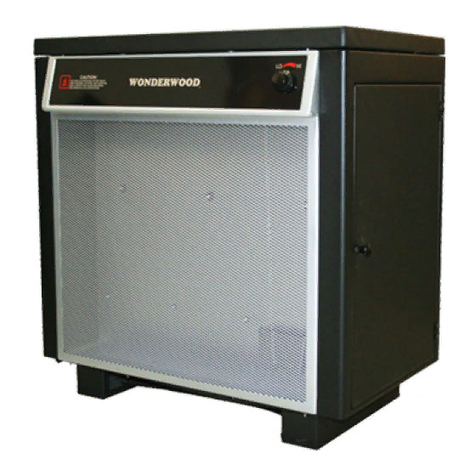
WARNING!WARNING!
WARNING!WARNING!
WARNING!
NEVER STORE FLAMMABLE LIQUIDS,NEVER STORE FLAMMABLE LIQUIDS,
NEVER STORE FLAMMABLE LIQUIDS,NEVER STORE FLAMMABLE LIQUIDS,
NEVER STORE FLAMMABLE LIQUIDS,
ESPECIALLY GASOLINE. IN THEESPECIALLY GASOLINE. IN THE
ESPECIALLY GASOLINE. IN THEESPECIALLY GASOLINE. IN THE
ESPECIALLY GASOLINE. IN THE
VICINITY OF THE HEATER.VICINITY OF THE HEATER.
VICINITY OF THE HEATER.VICINITY OF THE HEATER.
VICINITY OF THE HEATER.
CAUTION!CAUTION!
CAUTION!CAUTION!
CAUTION!
OVERFIRING THE APPLIANCE MAYOVERFIRING THE APPLIANCE MAY
OVERFIRING THE APPLIANCE MAYOVERFIRING THE APPLIANCE MAY
OVERFIRING THE APPLIANCE MAY
CAUSE A HOUSE FIRE. IF A UNIT ORCAUSE A HOUSE FIRE. IF A UNIT OR
CAUSE A HOUSE FIRE. IF A UNIT ORCAUSE A HOUSE FIRE. IF A UNIT OR
CAUSE A HOUSE FIRE. IF A UNIT OR
CHIMNEY CONNECTOR GLOWS, YOUCHIMNEY CONNECTOR GLOWS, YOU
CHIMNEY CONNECTOR GLOWS, YOUCHIMNEY CONNECTOR GLOWS, YOU
CHIMNEY CONNECTOR GLOWS, YOU
ARE OVERFIRING.ARE OVERFIRING.
ARE OVERFIRING.ARE OVERFIRING.
ARE OVERFIRING.
CAUTION!CAUTION!
CAUTION!CAUTION!
CAUTION!
NEVER USE GASOLINE, GASOLINE-TYPENEVER USE GASOLINE, GASOLINE-TYPE
NEVER USE GASOLINE, GASOLINE-TYPENEVER USE GASOLINE, GASOLINE-TYPE
NEVER USE GASOLINE, GASOLINE-TYPE
LANTERN FUEL, KEROSENE, CHARCOALLANTERN FUEL, KEROSENE, CHARCOAL
LANTERN FUEL, KEROSENE, CHARCOALLANTERN FUEL, KEROSENE, CHARCOAL
LANTERN FUEL, KEROSENE, CHARCOAL
LIGHTER FLUID, OR FLAMMABLELIGHTER FLUID, OR FLAMMABLE
LIGHTER FLUID, OR FLAMMABLELIGHTER FLUID, OR FLAMMABLE
LIGHTER FLUID, OR FLAMMABLE
LIQUIDS TO START OR "FRESHEN UP" ALIQUIDS TO START OR "FRESHEN UP" A
LIQUIDS TO START OR "FRESHEN UP" ALIQUIDS TO START OR "FRESHEN UP" A
LIQUIDS TO START OR "FRESHEN UP" A
FIRE IN THE HEATER.FIRE IN THE HEATER.
FIRE IN THE HEATER.FIRE IN THE HEATER.
FIRE IN THE HEATER.
CAUTION!CAUTION!
CAUTION!CAUTION!
CAUTION!
USE WOOD OR WOOD-LIKE MATERIALSUSE WOOD OR WOOD-LIKE MATERIALS
USE WOOD OR WOOD-LIKE MATERIALSUSE WOOD OR WOOD-LIKE MATERIALS
USE WOOD OR WOOD-LIKE MATERIALS
ONLY. DO NOT USE COAL ORONLY. DO NOT USE COAL OR
ONLY. DO NOT USE COAL ORONLY. DO NOT USE COAL OR
ONLY. DO NOT USE COAL OR
CHARCOAL. COAL OR CHARCOAL WILLCHARCOAL. COAL OR CHARCOAL WILL
CHARCOAL. COAL OR CHARCOAL WILLCHARCOAL. COAL OR CHARCOAL WILL
CHARCOAL. COAL OR CHARCOAL WILL
DESTROY THE FIREBOX. DO NOT USEDESTROY THE FIREBOX. DO NOT USE
DESTROY THE FIREBOX. DO NOT USEDESTROY THE FIREBOX. DO NOT USE
DESTROY THE FIREBOX. DO NOT USE
DRIED LUMBER OR TREATED WOOD.DRIED LUMBER OR TREATED WOOD.
DRIED LUMBER OR TREATED WOOD.DRIED LUMBER OR TREATED WOOD.
DRIED LUMBER OR TREATED WOOD.
WARNING!WARNING!
WARNING!WARNING!
WARNING!
NEVER OPERATE THIS HEATER WITH THENEVER OPERATE THIS HEATER WITH THE
NEVER OPERATE THIS HEATER WITH THENEVER OPERATE THIS HEATER WITH THE
NEVER OPERATE THIS HEATER WITH THE
FUEL DOOR OPEN.FUEL DOOR OPEN.
FUEL DOOR OPEN.FUEL DOOR OPEN.
FUEL DOOR OPEN. NOTE:NOTE:
NOTE:NOTE:
NOTE:
DO NOT ELEVATE FIRE OR USE WITH ADO NOT ELEVATE FIRE OR USE WITH A
DO NOT ELEVATE FIRE OR USE WITH ADO NOT ELEVATE FIRE OR USE WITH A
DO NOT ELEVATE FIRE OR USE WITH A
GRATE - BUILD FIRE DIRECTLY ON THEGRATE - BUILD FIRE DIRECTLY ON THE
GRATE - BUILD FIRE DIRECTLY ON THEGRATE - BUILD FIRE DIRECTLY ON THE
GRATE - BUILD FIRE DIRECTLY ON THE
HEARTH.HEARTH.
HEARTH.HEARTH.
HEARTH.
99
99
9
Chimney MaintenanceChimney Maintenance
Chimney MaintenanceChimney Maintenance
Chimney Maintenance
Creosote - Formation and Need for RemovalCreosote - Formation and Need for Removal
Creosote - Formation and Need for RemovalCreosote - Formation and Need for Removal
Creosote - Formation and Need for Removal
When wood is burned slowly, it produces tar and other
organic vapors, which combine with expelled moisture to
form creosote. The creosote vapors condense in the rela-
tively cool chimney flue of a slow burning fire. As a result,
creosote residue accumulates on the flue lining. When ig-
nited this creosote makes an extremely hot fire.
Thechimney connectorand chimney shouldbe inspected at
least twice monthly during the heating season to determine
if a creosote buildup has occurred.
Ifcreosotehasaccumulated,itshouldberemoved.Failureto
remove creosote may cause a house fire. Creosote may be
removed by using a chimney brush or other commonly
available materials.
Chimneyfiresburnveryhot.Ifthechimneyconnectorshould
glow red, immediately call the fire department, then reduce
thefirebyclosingtheinletaircontrolandpouralargequantity
of coarse salt, baking soda or cool ashes on top of the fire in
the firebox. CAUTION:CAUTION:
CAUTION:CAUTION:
CAUTION: A chimney fire may cause ignition of
wall studs or rafters which you thought were a safe distance
from the chimney. If you have a chimney fire, have your
chimneyinspected by a qualified person before using again.
Service HintsService Hints
Service HintsService Hints
Service Hints
Donot expecta heaterto draw. Itis thechimney thatcreates
thedraft.Smokespillageintothehouseorexcessivebuildup
of water or creosote in the chimney are warnings that the
chimney is not functioning properly. Correct problem before
using heater. Possible causes are:
The connector pipe may push into the chimney too far,
stopping the draft. (Fig. 7)
Donot connect two heaters into the same chimney flue.
The chimney used for a heater must not be used to
ventilate the cellar or basement. If there is a cleanout
opening at the base of the chimney, It must be closed
tightly.
1.
2.
3.
4.
5.
Ifthe chimneyis operatingtoo cool,water willcondense
in the chimney and run back into the stove. Creosote
formation will be rapid and may block the chimney.
Operate the heater at a high enough fire to keep the
chimney warm preventing this condensation.
If the fire burns well but sometimes smokes or burns
slowly,itmaybecaused bythechimneytopbeing lower
thananotherpartofthehouseoranearbytree.Thewind
blowingover a house or tree, fallsontop of the chimney
likewaterover adam, beatingdownthe smoke.The top
of the chimney should be at least 3 feet above the roof
and be at least to 2 feet higher than any point of the roof
within 10 feet (Fig. 6).
WARNING!WARNING!
WARNING!WARNING!
WARNING!
USE ONLY THE LEGS PROVIDED WITH THISUSE ONLY THE LEGS PROVIDED WITH THIS
USE ONLY THE LEGS PROVIDED WITH THISUSE ONLY THE LEGS PROVIDED WITH THIS
USE ONLY THE LEGS PROVIDED WITH THIS
HEATER. REFER TO STEP 5 IN THE "INSTAL-HEATER. REFER TO STEP 5 IN THE "INSTAL-
HEATER. REFER TO STEP 5 IN THE "INSTAL-HEATER. REFER TO STEP 5 IN THE "INSTAL-
HEATER. REFER TO STEP 5 IN THE "INSTAL-
LATION" SECTION OF THIS MANUAL.LATION" SECTION OF THIS MANUAL.
LATION" SECTION OF THIS MANUAL.LATION" SECTION OF THIS MANUAL.
LATION" SECTION OF THIS MANUAL.
WARNING!WARNING!
WARNING!WARNING!
WARNING!
DO NOT OBSTRUCT THE SPACE BENEATHDO NOT OBSTRUCT THE SPACE BENEATH
DO NOT OBSTRUCT THE SPACE BENEATHDO NOT OBSTRUCT THE SPACE BENEATH
DO NOT OBSTRUCT THE SPACE BENEATH
THE HEATERTHE HEATER
THE HEATERTHE HEATER
THE HEATER
